Horses are majestic creatures that have been domesticated for thousands of years. They come in different shapes and sizes, and some of them are truly massive. In this article, we will be exploring the top 13 biggest horses in the world.
These horses are known for their incredible height and weight, and they come from different breeds and parts of the world. From the Shire breed to the Belgian breed, these horses have captured the attention of people all over the world. We will be looking at their height, weight, and some interesting facts about each of them.
You are reading: The Top 13 Biggest Horses In The World
So, let’s dive in and discover the biggest horses in the world!
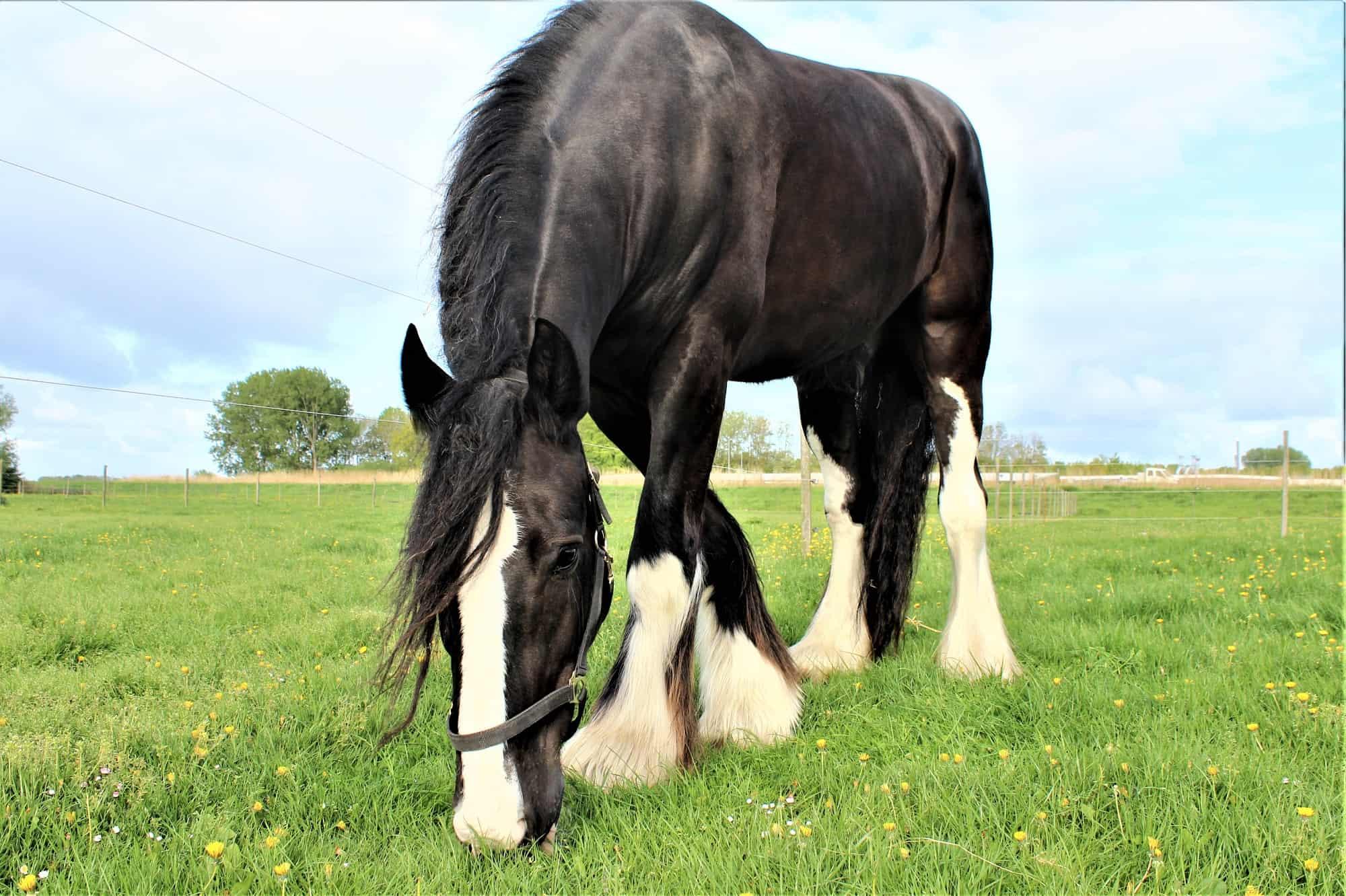
The Top 13 Biggest Horses In The World
Shire
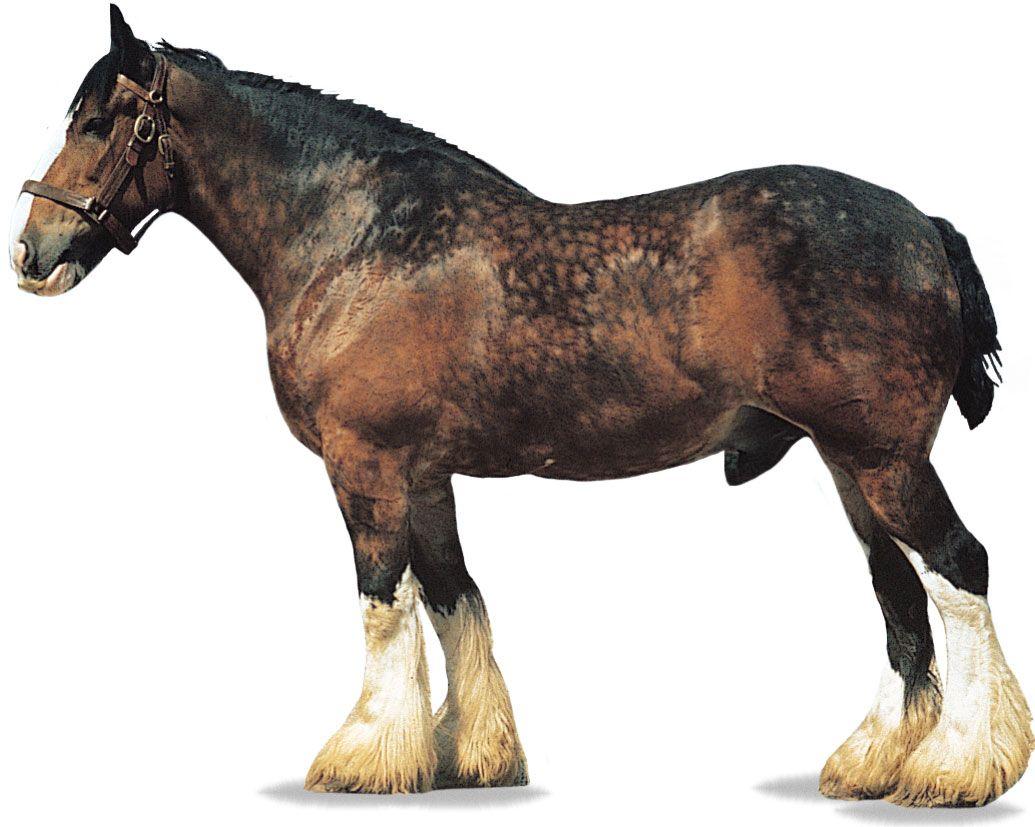
The Shire horse is a British breed of draught horse that is usually black, bay, or grey. It is a tall breed, and Shires have at various times held world records both for the largest horse and for the tallest horse.
The Shire has a great capacity for weight-pulling and was used for farm work, to tow barges, and as a cart-horse for road transport. The breed is believed to be a descendant of the “Great Horse” of medieval England, a large, strong mount that could carry a knight and armor weighing up to 400 pounds with swiftness and agility.
These native English horses were crossed with Flemish stallions in the 1200s and Dutch Friesians in the 1500s. The first Shire arrived in the US in 1853, but more aggressive importation did not begin until the late 1800s. The American Shire Horse Association was founded in 1885, and their registry has operated continuously. Today, the Shire horse is still popular for pulling vehicles, such as sightseeing wagons, and many equestrians enjoy riding the docile breed for pleasure.
They are an environmentally friendly alternative to tractors on small farms and are still used in logging operations. They also are a popular promotional tool for modern-day beer brewers, some of whom are again making deliveries by horse and wagon.
Brabant
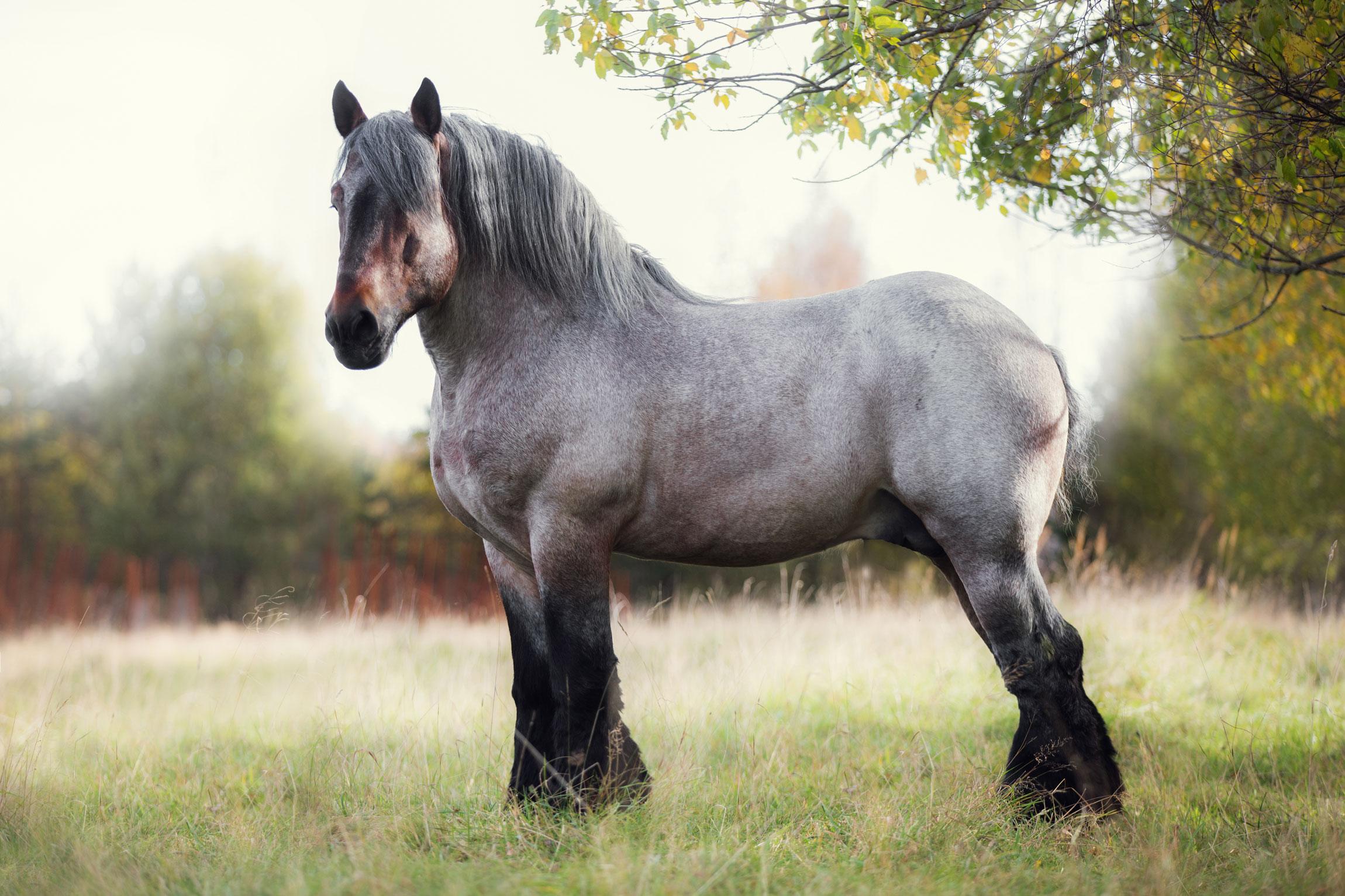
The Brabant horse is a draft horse breed that originated in the Brabant region of modern-day Belgium. It is one of the heaviest of all draft breeds and is known for its strength and ability to perform heavy work.
– Square-headed with a straight profile
– Pricked ears and gentle expressions
– Short but strong necks
– Deep, muscular chests
– Typically shorter in height than other draft breeds
– Used for agricultural work and heavy haulage
– Has an intermediate level of genetic diversity, but low levels of inbreeding
The American Brabant is a draft horse breed that has 25 to 99% European Belgian bloodlines. It has a variety of appearances but is typically shorter in height than other draft breeds.
The American Brabant Draft Horse is a popular breed in the United States and is used for agricultural work, logging, and as a pleasure horse.
Ardennes
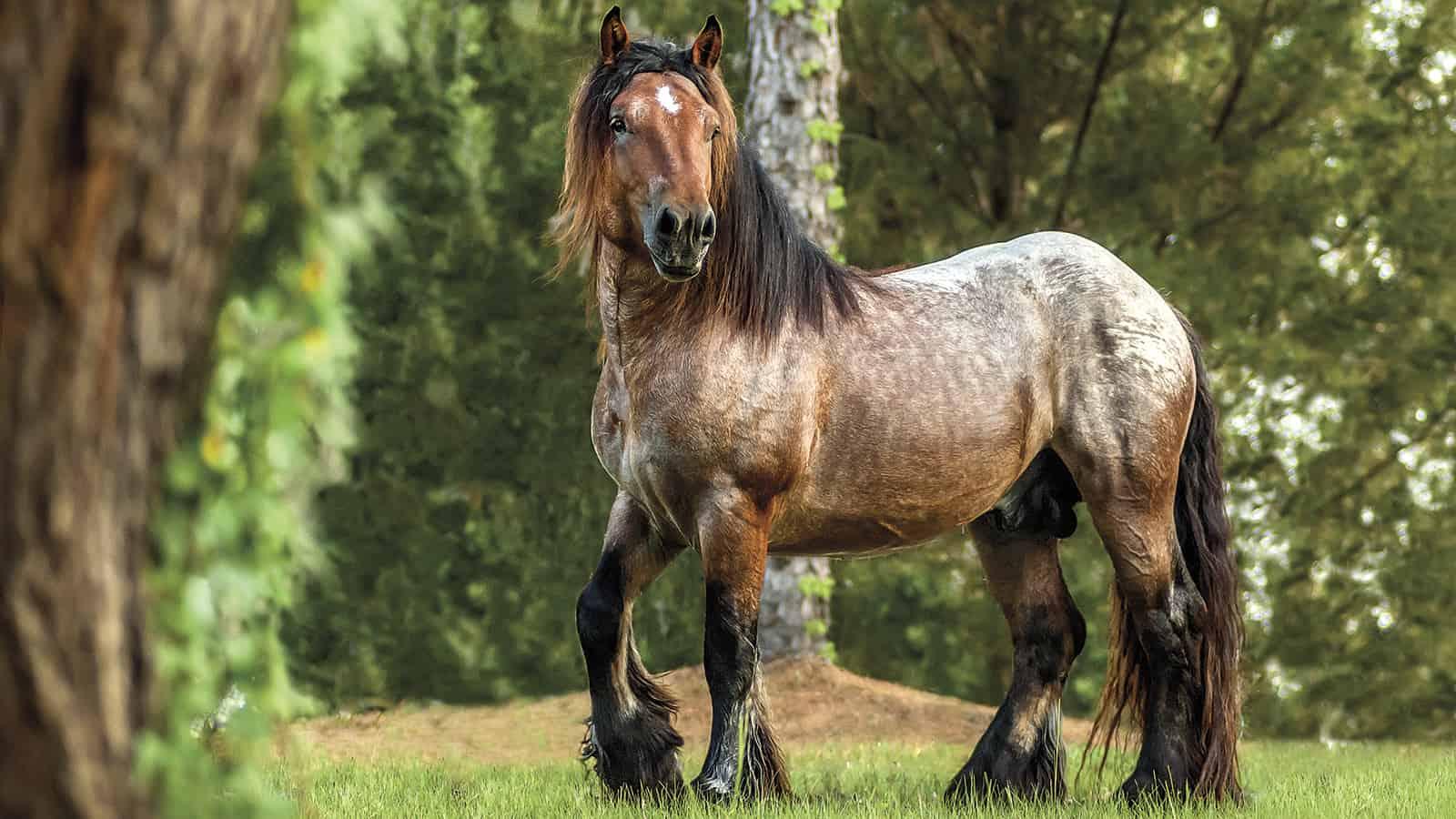
The Ardennes is an ancient breed of draft horse that originates from the Ardennes area in Belgium, Luxembourg, and France.
– Heavy-boned with thick legs
– Used for draft work and as a war horse since the first century BC
– Considered medium-sized draft horses
– Stands between 15 and 16 hands tall and weighs somewhere between 1,500 pounds and 2,000 pounds
– Has the thickest build of any draft horse breed
– Could be a direct descendant of the prehistoric Solutré horse and is claimed to be descended from the type of horse described by Julius Caesar in his Commentarii de Bello Gallico
– Described by Caesar as “rustic, hard and tireless” and recommended them for use in heavy cavalry units
– Used as war horses in the Crusades in the 11th century
– Imported into the United States from Belgium, with imports occurring as late as 2004
The Ardennes is a lighter, mountain-bred version of the Belgian Draft horse and was used in creating the Baltic Ardennes, Russian Heavy Draft, and Swedish Ardennes breeds.
Clydesdale
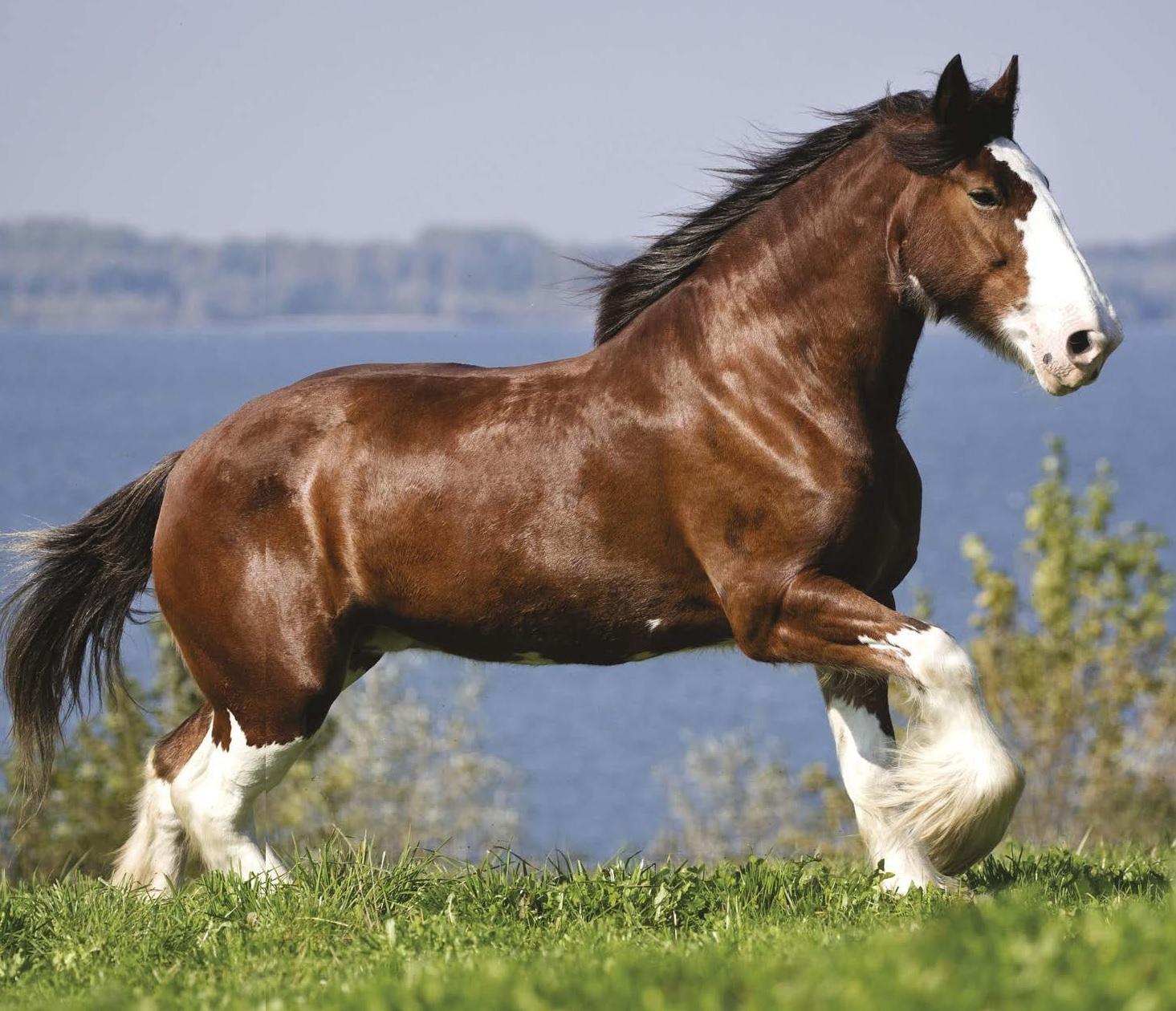
The Clydesdale horse is a Scottish breed of draft horse that is named after the Clydesdale region of Scotland.
Physical Characteristics:
– Stands between 16.0 to 18.0 hands tall
– Weighs between 820 to 910 kg (1800 to 2000 lb)
– Has an arched neck, high withers, and a sloped shoulder
– Has long, silky feathering on legs and round feet
– Has a straight nose, big ears, and a well-arched neck
– Has four white legs with lots of feathering
– Has a high-stepping walk and trot
– Has a relatively elongated muzzle, providing space for the teeth
– Has a calm, easy-going temperament
Uses:
– Originally bred for heavy farm and industrial work
– Used for hauling and doing farm work
– Used as a therapy horse
– Used as a family horse
– Used for trail riding
– Used as a parade horse
– Sometimes ridden for dressage
– Used for competition in the British Dressage Draught Horse Championships
The conformation of the Clydesdale has changed greatly throughout its history. In the 1920s and 1930s, it was a compact horse smaller than the Shire, Percheron, and Belgian Draught. Beginning in the 1940s, breeding animals were selected to produce taller horses that looked more impressive in parades and shows.
Today, the Clydesdale is known for its imposing height and weight, as well as its gentle and docile nature.
Percheron

The Percheron horse is a draft horse breed that originated in the Huisne river valley in western France, part of the former Perche province from which the breed takes its name.
Physical Characteristics:
– Usually gray or black in color
– Well-muscled
– Known for possessing good muscular development together with style, grace, and activity
– Ample bone, which gives an overall impression of great strength and balance
– Stands between 15-16 hands high
– Weighs between 1,800 to 2,600 pounds
– Has a fairly small and clean-cut head, a long neck, and a well-muscled body
– Has a mild disposition
Uses:
– Originally bred as war horses
– Used for heavy farm work
– Used for pulling carriages, sleighs, and hayrides
– Used in logging
– Used for competition in English riding disciplines such as show jumping
– Used for dressage
– Crossed with light horse breeds, such as thoroughbreds, to produce a sport-type riding horse
The Percheron horse is known for its intelligence, willingness to work, and adaptability. They are equally comfortable under saddle and in harness and are often crossed with light horse breeds to produce a sport-type riding horse.
Today, Percherons are most often seen pulling carriages, sleighs, and hayrides, and their strength and stamina make them ideal for use in logging and on farms. They are also used for competition in English riding disciplines such as show jumping and dressage.
Dutch Draft

The Dutch Draft, also known as the Nederlands Trekpaard, is a heavy draft horse breed that originated in the province of Zeeland in the Netherlands.
Physical Characteristics:
– Massive, cold-blooded horse with a solid, muscular build
– Stands around 16 hands high
– Head has a straight profile and is short
– Legs are heavily feathered
– Similar in appearance to the Belgian Ardennes and Brabant breeds
– Solidly built
Temperament:
– Calm
Read more : 14 Types Of Wolves
– Friendly
Read more : The Top 8 Snakes That Look Like Copperheads
– Docile
– Quiet
Uses:
– Originally bred for heavy farm work
– Used for pulling carts and carriages
– Used for logging
– Known for its quiet disposition and unhurried movements
The Dutch Draft was created in the early twentieth century by cross-breeding local Zeeland mares with Belgian Ardennes and Brabant breeds. Until after the Second World War, it was the most important Dutch horse breed, but with the mechanization of agriculture, it declined rapidly. In 2009, the breed population was reported to be 1424.
Today, the Dutch Draft is used for pulling carts and carriages, as well as for logging. Its quiet disposition and unhurried movements make it a popular choice for novice riders and those looking for a calm, docile horse.
Belgian
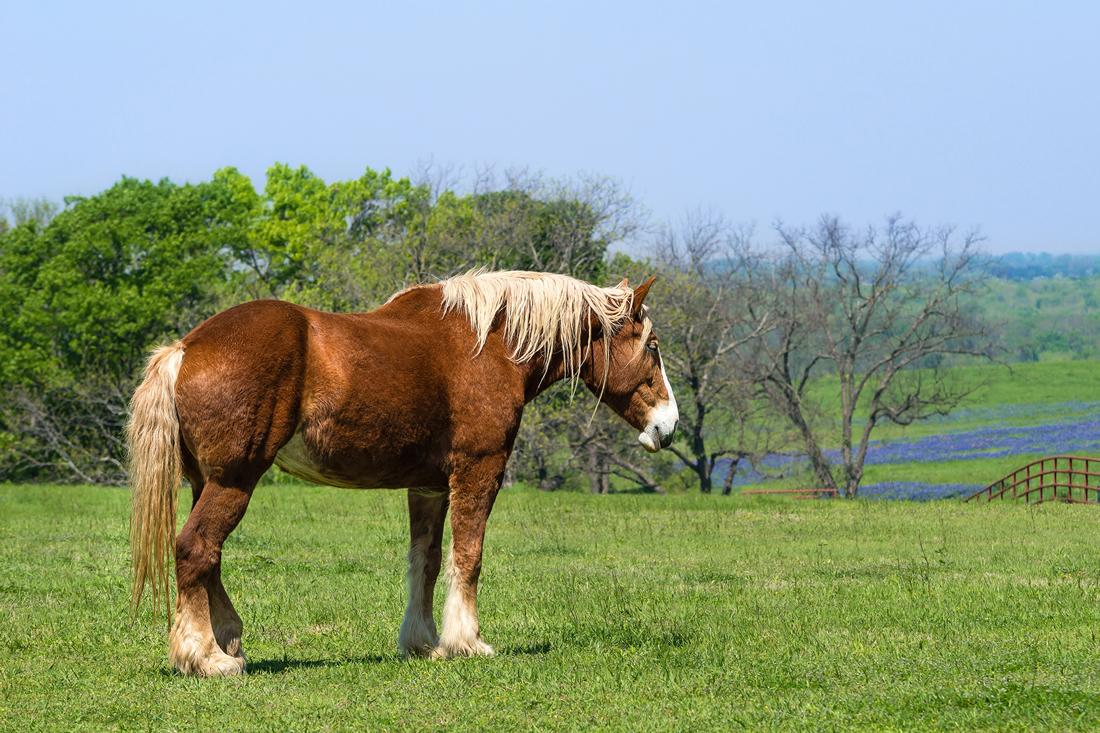
The Belgian horse is a heavy draft breed known for its exceptional power and ability to withstand various climates.
Physical Characteristics:
– Broad chest and high neck
– Short, wide back
– Muscular hindquarters
– Medium-sized hooves
– Most commonly bay, chestnut/sorrel, or roan in color
– Prized color is chestnut/sorrel with white mane and tail, white stripe on the face, and four white socks
Temperament:
– Calm
Read more : The Top 8 Snakes That Look Like Copperheads
– Docile
– Kind
– Willing
– Steady
– Easy to handle
Uses:
– Originally bred for farming, industrial work, and transportation
– Used for plowing, pulling carriages, and logging
– Still used for all manner of draft work
– Used for horse riding and other disciplines
Belgians are known to have a sense of humor and a personality that is distinct among draft breeds. They can adjust well to most climates and are docile and easy to handle, making them a popular choice for novice riders and those looking for a calm, docile horse.
Although not commonly used for draft duties today, enthusiasts prefer them for horse riding and other disciplines. Belgians are still used for all manner of draft work, including plowing, logging, and pulling carriages.
Suffolk Punch
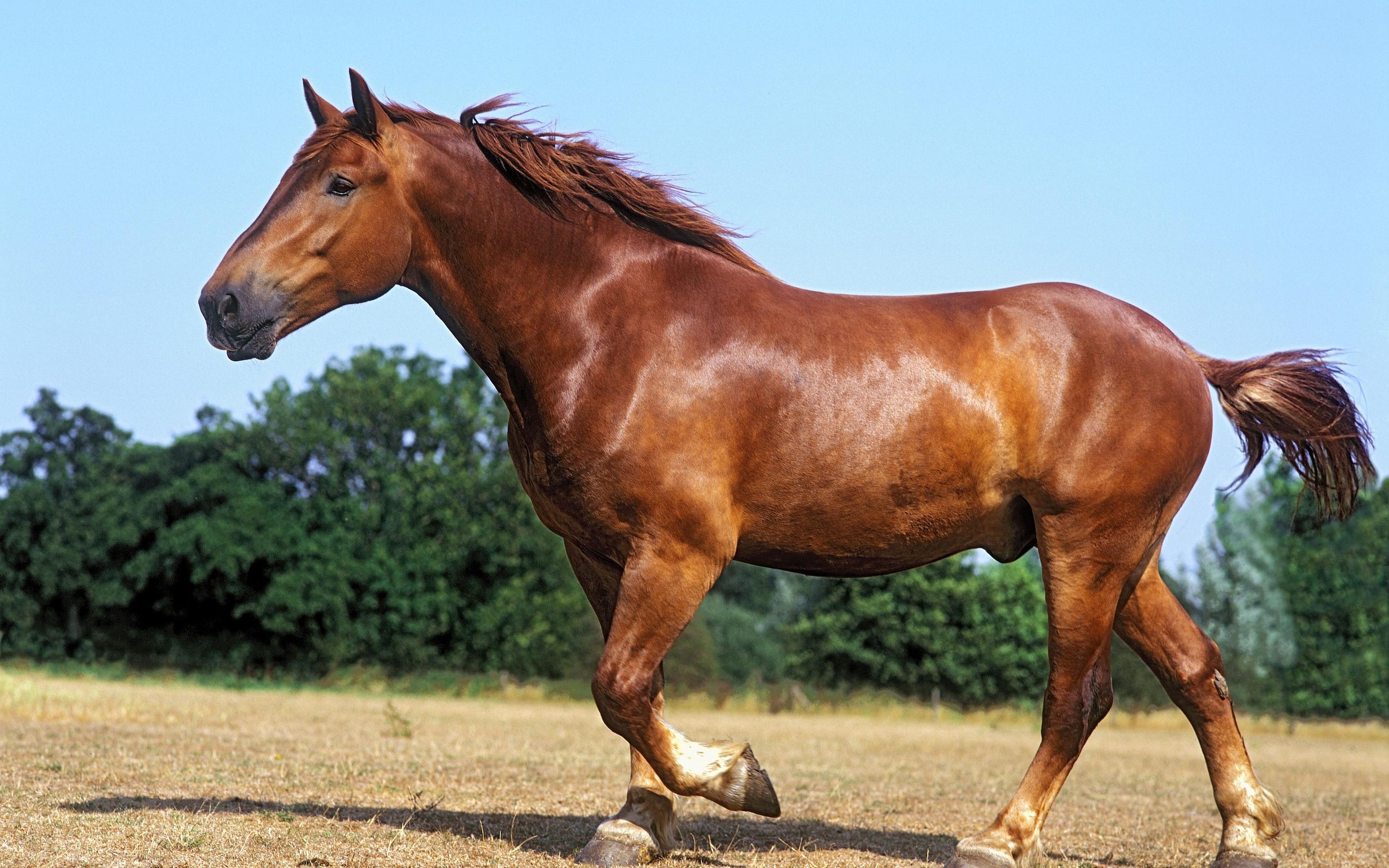
The Suffolk Punch, also known as the Suffolk Horse or Suffolk Sorrel, is a heavy draft horse breed that originated in Suffolk, England.
Physical Characteristics:
– Always chestnut in color
– Broad head with a thick, arched neck
– Slightly-sloping muscular shoulder
– Short but wide back
– Robust legs with broad joints
– Sound, well-formed hooves
– Little or no feathering on the fetlocks
Temperament:
– Gentle
– Calm
– Kind
– Even-tempered
– Not easily spooked
Uses:
– Originally bred for agricultural work
– Used for heavy draft work
– Known for their energetic gaits
The Suffolk Punch is a heavy draft horse breed that was developed for agricultural work, which is why it tends to be shorter but more massively built than other British heavy draft breeds, such as the Clydesdale or the Shire.
The breed has a powerful, arching neck; well-muscled, sloping shoulders; a short, wide back; and a muscular, broad croup. The Suffolk Punch is known for its gentle, calm, and even-tempered personality, making it a good choice for beginners. They are not easily spooked and are energetic at the trot.
Today, the Suffolk Punch is still used for heavy draft work and is a popular breed for those who appreciate its history and unique characteristics.
Arabian Stallion
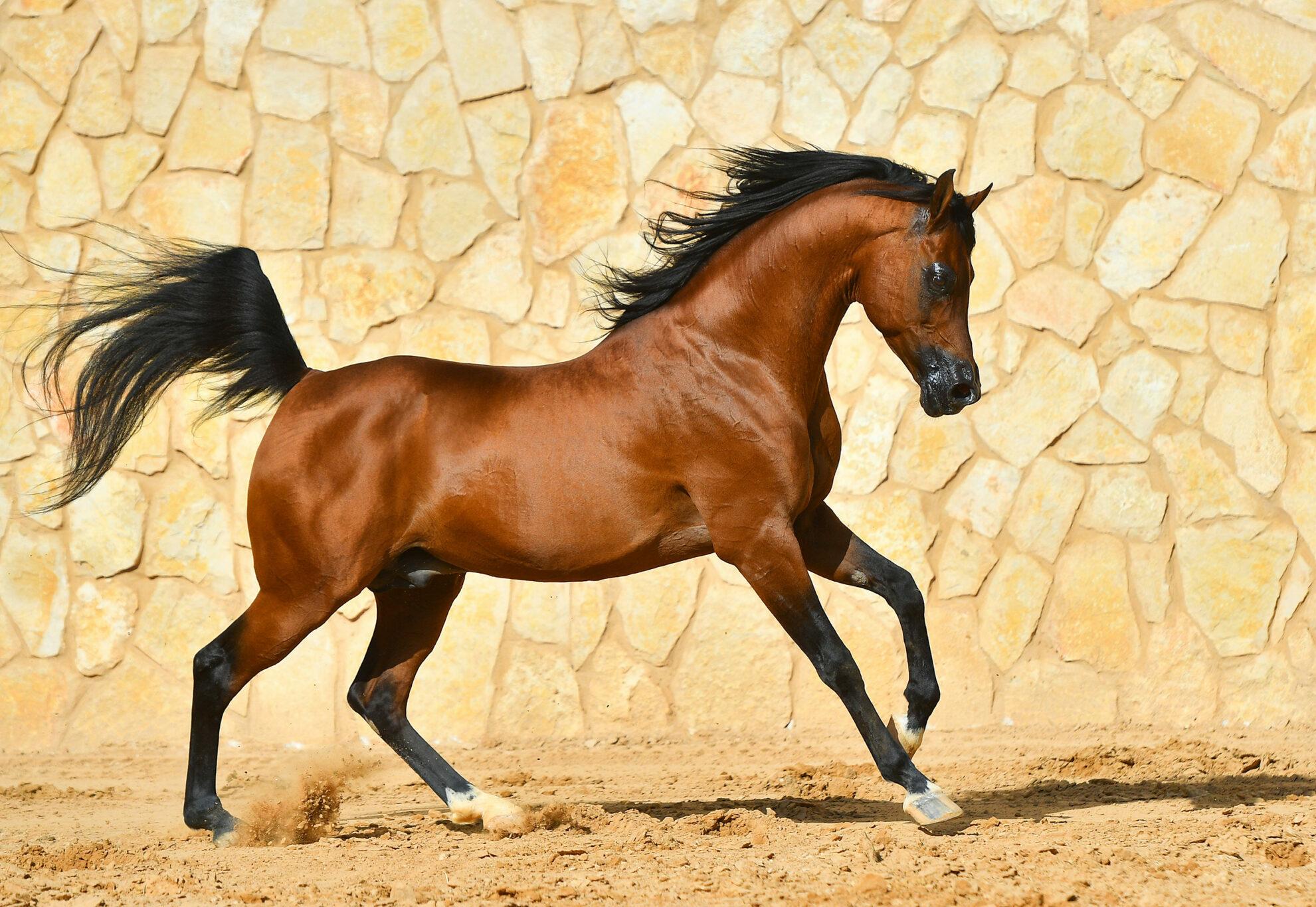
The Arabian Stallion is a breed of horse known for its striking beauty, intelligence, and athleticism.
Physical Characteristics:
– Compact, relatively small horse with a small head, protruding eyes, wide nostrils, and marked withers
– Short, concave head with big and prominent eyes and a small teacup muzzle
– Arched and high-set neck with a high tail carriage
– Strong, muscular legs that give the Arabian great speed and stamina
– Usually stands between 14 hands (56 inches) to 16 hands (64 inches) tall
– Weighs between 800 to 1,000 pounds
– Known for their long, arched necks, dished facial profile, and high tail carriage
Temperament:
– Loving, loyal, and responsive
– Hot-blooded and highly intelligent
– Gentle, calm, and even-tempered
– Kind, willing, and steady
Uses:
– Bred for endurance and athleticism, even in harsh conditions
– Excel in almost every horse sport
– Used for horse riding and other disciplines
– Quick learners and skilled athletes
The Arabian Stallion is a highly valued breed of horse that has contributed its elegance, spirit, and intelligence to almost every light horse breed that exists. They are known for their long, arched necks, dished facial profile, and high tail carriage, as well as their endurance and athleticism.
Arabians are hot-blooded and highly intelligent horses that need someone with experience to handle them. However, they are also gentle, calm, and even-tempered, making them a good choice for beginners. Arabians excel in almost every horse sport and are quick learners and skilled athletes.
Today, Arabians are found throughout the world and are used for horse riding and other disciplines.
American Cream Draft
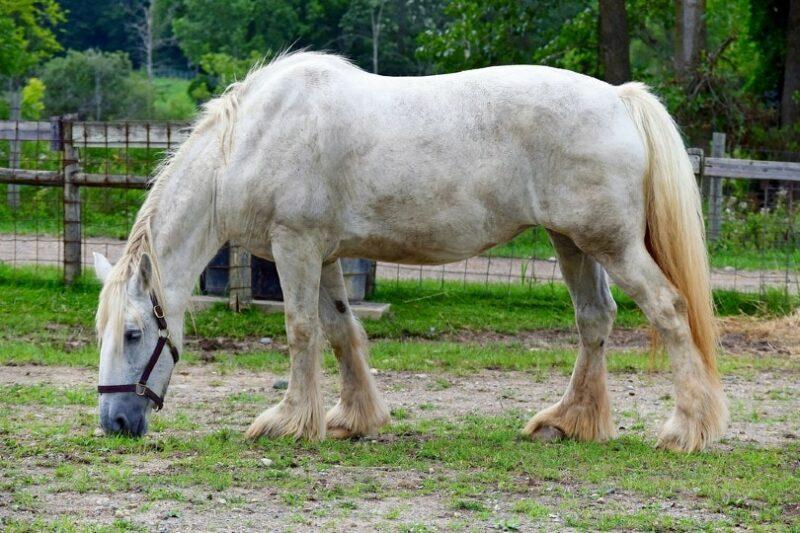
The American Cream Draft is a rare breed of draft horse that is characterized by the cream or “gold champagne” color of its coat.
Physical Characteristics:
– Cream or “gold champagne” color of its coat
– Medium-heavy draft horse
– Ranges from 15 to 16.3 hands tall
– Weighs between 1500 to 2000 pounds
Temperament:
– Calm
Read more : The Top 8 Snakes That Look Like Copperheads
– Docile
– Laid-back
– Trustworthy
– People-oriented
History:
– Developed in Iowa during the early twentieth century from a cream-colored mare named Old Granny
– A breed registry was formed in 1944 but became inactive for several decades when breed numbers dropped due to the mechanization of farming
– Reactivated in 1982 and population numbers have slowly grown since then
– The only breed of draft horse developed in the United States
The American Cream Draft is a rare breed of draft horse that is known for its cream or “gold champagne” color of its coat. It is a medium-heavy draft horse that ranges from 15 to 16.3 hands tall and weighs between 1500 to 2000 pounds.
The breed is calm, docile, laid-back, trustworthy, and people-oriented, making it a good choice for novice riders and those looking for a calm, docile horse.
The American Cream Draft was developed in Iowa during the early twentieth century from a cream-colored mare named Old Granny. It is the only breed of draft horse developed in the United States.
The breed registry was formed in 1944 but became inactive for several decades when breed numbers dropped due to the mechanization of farming. It was reactivated in 1982 and population numbers have slowly grown since then.
Australian Draught
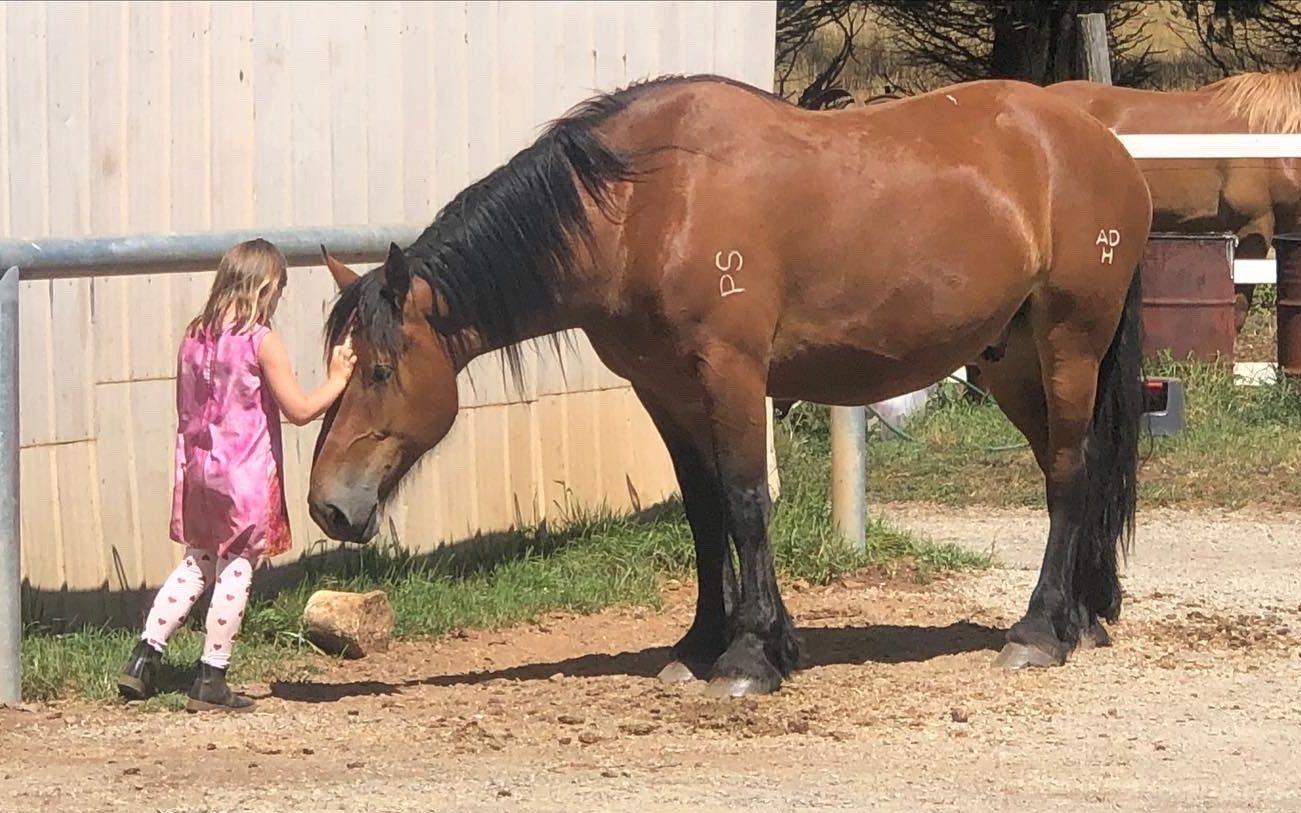
The Australian Draught horse is a breed of draft horse that was developed in Australia through the crossbreeding of four recognized pure draft horse breeds: Clydesdale, Percheron, Shire, and Suffolk Punch, as well as some light horse bloodlines.
Physical Characteristics:
– Combination of many different heavy breeds, taking typical characteristics from each one
– All solid colors are accepted, but excessive white is not favored on the face or body
– White below the knee is acceptable
– Range in height from around 16-17.3 hands high
– Known for their extreme hardiness, strength, and even temperament
Temperament:
– Good temperament
– Even temperament
Uses:
– Used for draught work throughout the centuries
– Used in led, novelty, ridden, and draught
The Australian Draught horse is a hardy breed known for its strength and good temperament. It is a combination of many different heavy breeds, taking typical characteristics from each one. The breed is known for its extreme hardiness, strength, and even temperament.
The Australian Draught horse comes in several types and ranges in height from around 16-17.3 hands high. All solid colors are accepted, but excessive white is not favored on the face or body, and white below the knee is acceptable.
The breed has been used for draught work throughout the centuries and is also used in led, novelty, ridden, and draught. The Australian Draught Horse Stud Book Society was established around 1979 to promote these horses and breeding programs.
Today, the Australian Draught horse is still used for draught work and is also used for other purposes such as novelty and ridden work.
Boulonnais
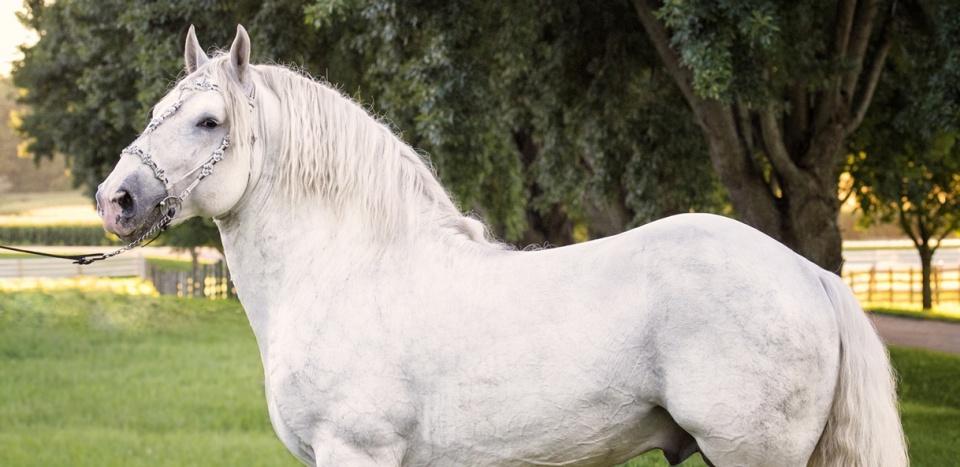
The Boulonnais is a French draft horse breed that is known for its sleek body, powerful looks, and friendly personality.
Physical Characteristics:
– Typically gray in color, ranging from a very light to a dark dappled shade
– Occasionally chestnut in color
– Known for their milky white coat and luxurious mane and tail
– Relatively short head with prominent eyes and a wide forehead
– Small and upright ears
– Well-muscled neck
– Broad and deeply set chest with a well-rounded rib cage
– Short, solid legs with flat joints
– Lack the typical feathering that is usually found in draft horses
– Very straight profile
– Oriental bloodline gives it a majestic demeanor
– Silky and bushy mane and tail
Temperament:
– Adaptable and highly trainable
– Easy-going yet lively
– Remarkably strong yet still agile and expressive
– Social
Read more : The Top 8 Snakes That Look Like Copperheads
– Docile
– Easily trainable
Uses:
– Originally bred for agricultural work
– Used for heavy draft work
– Known for their lively aptitude for physical tasks
The Boulonnais horse is a noble-looking French draft horse that typically stands between 14.3 to 16.3 hands tall.
The breed is known for its sleek body, powerful looks, and friendly personality. Boulonnais horses are adaptable and highly trainable, easy-going yet lively, remarkably strong yet still agile and expressive. They were originally bred for agricultural work and are used for heavy draft work, known for their lively aptitude for physical tasks.
The Boulonnais horse is typically gray in color, ranging from a very light to a dark dappled shade, and occasionally chestnut in color. They are known for their milky white coat and luxurious mane and tail.
The Boulonnais horse has a relatively short head with prominent eyes and a wide forehead, small and upright ears, and a well-muscled neck. Their legs are short, solid, and lack the typical feathering that is usually found in draft horses.
Overall, the Boulonnais horse has a very straight profile, and its Oriental bloodline gives it a majestic demeanor. The breed is social, docile, and easily trainable.
Jutland
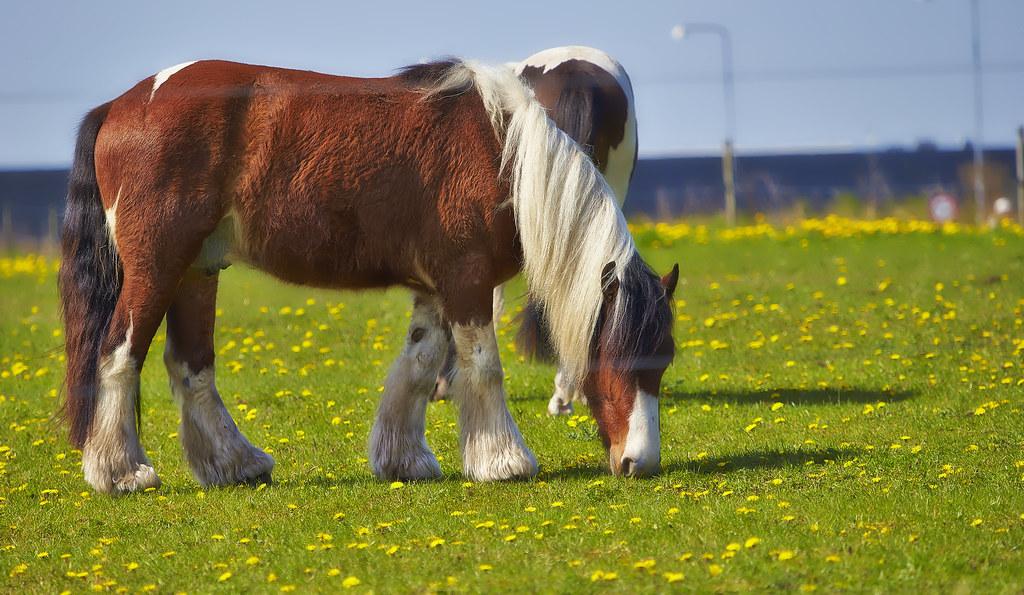
The Jutland horse is a draft horse breed that originated in Jutland, Denmark.
Physical Characteristics:
– Usually chestnut in color
– Compact and muscular build
– Known for their calm and willing temperament
– Heavy draft horse
– Developed for use in agriculture
– Influenced by the Frederiksborg horse, another Danish breed, during the 18th century
– Crossbred with Suffolk Punch and Ardennes blood during the 19th century
– Cleveland Bay and Yorkshire Coach Horse horses were also added during the 19th century
Uses:
– Originally developed for use in agriculture
– More often seen in urban settings and at horse shows today
– Known for pulling Carlsberg brewery beer wagons around Copenhagen
The Jutland horse is a heavy draft horse breed that was originally developed for use in agriculture. They are usually chestnut in color and have a compact and muscular build.
The breed is known for its calm and willing temperament, making it a popular choice for urban settings and horse shows. The Jutland horse was influenced by the Frederiksborg horse, another Danish breed, during the 18th century, and crossbred with Suffolk Punch and Ardennes blood during the 19th century. Cleveland Bay and Yorkshire Coach Horse horses were also added during the 19th century.
Today, the Jutland horse is more often seen in urban settings and at horse shows, but it is also known for pulling Carlsberg brewery beer wagons around Copenhagen.
FAQS
1. What is the biggest horse breed in the world?
The Shire breed is currently the largest horse breed in the world, known for its tall, muscular build and feathered legs.
2. What is the tallest horse in the world?
As of 2021, the tallest horse in the world is Big Jake, a Belgian breed horse that measures over 22 hands tall.
3. What is the heaviest horse in the world?
The heaviest horse ever recorded was Sampson, a Shire breed horse that weighed an astounding 3,359 pounds.
4. What are some other large horse breeds?
Some other large horse breeds include the Clydesdale, Percheron, Belgian Draft, Dutch Draft, Suffolk Punch, American Cream Draft, and Australian Draught Horse.
5. What are some common uses for large horses?
Large horses have been used for a variety of purposes throughout history, including farming, transportation, and even as a riding horse.
6. What is the temperament of large horses?
Large horses, such as the Shire and Belgian breeds, are known for their gentle and calm temperament. They are intelligent, willing, and easy to train, and are also known for their loyalty and affection towards their owners.
7. How is the height of a horse measured?
Horses are measured in hands, which is a unit of measurement equal to four inches. The height of a horse is measured from the ground to the highest point of the withers, which is the ridge between the shoulder blades.
8. What is the history of large horse breeds?
Large horse breeds have been around for centuries and have been bred for their strength and ability to perform heavy work, such as pulling carts and plows. Despite the rise of machines, large horses continue to be admired and used for a variety of purposes today.
Source: https://petstutorial.com
Category: Animals










